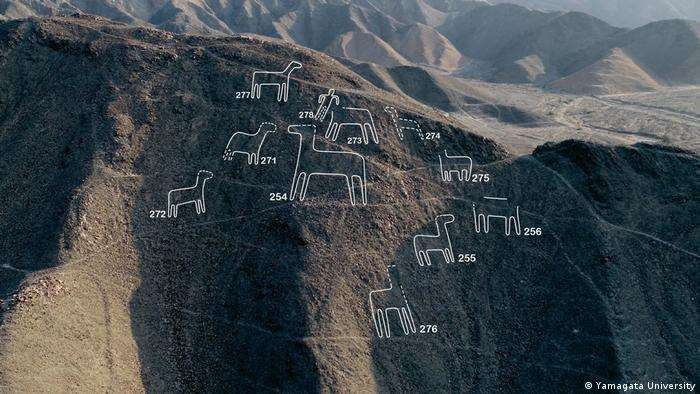December 9, 2022, 22:31 PM
December 9, 2022, 22:31 PM
Japanese researchers discovered on the southern coast of Peru 168 new geoglyphs near the Nazca lines, considered Cultural Heritage of Humanity by Unesco since 1994, as confirmed this Friday (12.09.2022) to EFE by the University of Yamagata (western Japan).
This team of academics from Yamagata University, led by Masato Sakai, made the discovery with the help of local archaeologists, aerial images and drones, where they discovered 168 new geoglyphs or large figures drawn on slopes or hills.
“In total we have found 168 figures: about 50 human, as well as birds, cats, snakes and also many linear and trapezoidal figures,” Sakai told EFE, noting that ceramics had also been found.
Since the beginning of the research project in 2004 –and since 2010 on the ground–, Japanese scientists have already found 358 figures (including those of the new discovery), with which they seek to protect these deposits, but also to understand the objective with which they were created.
“To protect the lines we have to know where they are located so that they don’t become homes or the local people use the area for agriculture,” says Sakai, who believes that these were used for the purpose of marking trails and paths.
The researcher explains that Now they also use artificial intelligence with the aim of finding patterns and seeing what exactly was wanted to be communicated with these forms, something that with traditional research methods would take a long time due to the extensive field to be investigated.
“We can find those figures on roads and trails, so we want to understand the combinations to know what they wanted to express”, says Sakai.
Traditionally it has been considered that the Nazca lines were a great astronomical calendar, other experts believe that they are religious figures and some ufologists They maintain that they were landing strips for extraterrestrial spacecraft.
The most representative figures are known as the spider, the monkey and the hummingbird, in addition to the condor, the pelicanthe seagull, the snail, the whale, the snake and the flame, among others.
The Nazca Lines are a set of hundreds of geometric figures, animals or plants located in an immense desert in the Ica region, south of Lima, made by the Nazca culture (1st-7th century) and whose function and meaning are not clear, nor is it the way in which they were made, since some exceed 100 meters and can only be seen from the air.
Despite their age, these famous and enigmatic figures they were not discovered until 1930 because the flatness of the desert surface only allowed the designs to be seen in their entirety from the air or from some surrounding hills.


















